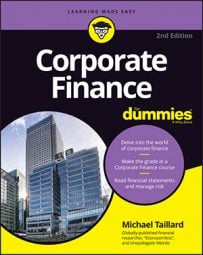The most common method of measuring the cost of capital that you’ll see in all the major college finance textbooks is called WACC (pronounced “whack”), the weighted average cost of capital. This particular equation takes the same basic cost of capital equation and contributes the proportions of total corporate value that each source of capital composes.
The following equation should make WACC a little bit more clear:

You can do a number of additional things to this equation to account for variations in cash inflows, interest rate differentials, inflation, tax rates, and so on. For the time being, the important thing is that you look at how this equation works and why it’s important:
E = Market value of equity
D = Market value of debt
V = Company Value (book value of debt plus book value of equity)
C = Cost, either of equity (E) or debt (D)
So, what you’re looking at is really just the same equation as the one to calculate the cost of capital (Cost of Capital = Cost of Equity + Cost of Debt), but with a twist. The (E/V) and (D/V) are simply weighted proportions.
The market value of equity is divided by the total corporate value to determine how much of the corporation’s value is funded by equity, and you do the same calculation for debt. By calculating this equation, you’re actually calculating the cost of capital in the proportions of the sources of capital.
It’s a little bit like taking the debt-to-equity ratio and splitting it up among the cost of capital. Doing this is going to help you determine the proper capital structure for a corporation by helping to identify disproportionately high costs and finding out how to maximize returns by pursuing the sources of capital that will optimize the financial balance between debt and equity.

